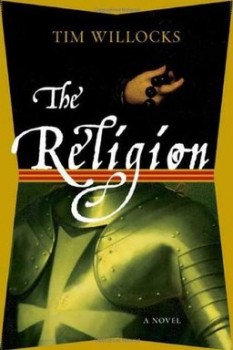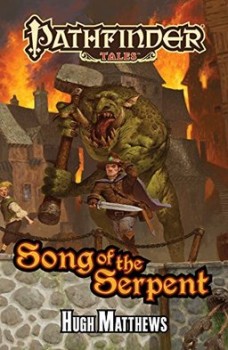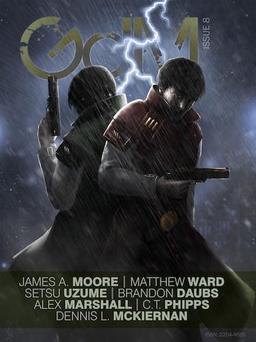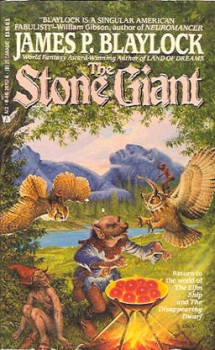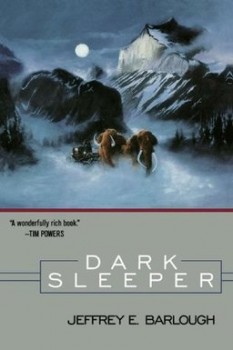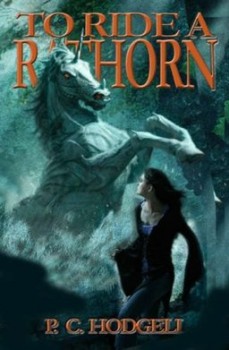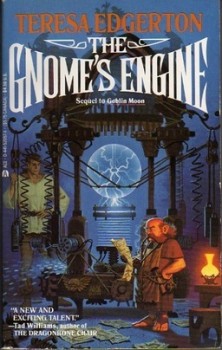Return to Enoch: The King of Nightspore’s Crown by Raphael Ordoñez
“Answers, he wants! Do you really think you can just go out and find the whole story somewhere, complete and cross-referenced, without any gaps or inconsistencies? I’m sorry to disillusion you, my boy, but that’s not the sort of world we live in. It’s a messy place. There are no infallible interpreters walking among the living, no emissaries sent from the blessed realm to dole out bits of lore that move history along and need never be questioned.”
Astyges speaking to Keftu, from The King of Nightspore’s Crown
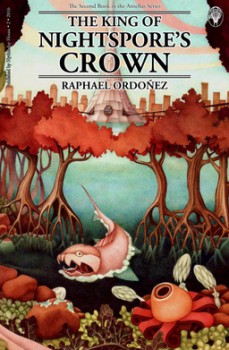 It’s a rare fantasy story that really surprises me. Partly, I have read a lot, but often there appears to be a collective dearth of imagination. I know readers — myself included — enjoy and find easy comfort in stories filled with familiar characters and plots, but once upon a time, before fantasy became a mass-market commodity in the 1970s, there seemed to be limitless inspiration in the stories that were told. Contemporary fantasy keeps getting stuck in homage and mimicry. When faux-European settings weren’t the norm, a reader could be transported to worlds as strikingly weird as Hodgson’s sunless Night Land, Burroughs’ dying Barsoom, or the haunted corridors of Peake’s Castle Gormenghast. When there’s no limit to the colors on a fantasy writer’s palette, why do I feel like I keep seeing the same dozen or so?
It’s a rare fantasy story that really surprises me. Partly, I have read a lot, but often there appears to be a collective dearth of imagination. I know readers — myself included — enjoy and find easy comfort in stories filled with familiar characters and plots, but once upon a time, before fantasy became a mass-market commodity in the 1970s, there seemed to be limitless inspiration in the stories that were told. Contemporary fantasy keeps getting stuck in homage and mimicry. When faux-European settings weren’t the norm, a reader could be transported to worlds as strikingly weird as Hodgson’s sunless Night Land, Burroughs’ dying Barsoom, or the haunted corridors of Peake’s Castle Gormenghast. When there’s no limit to the colors on a fantasy writer’s palette, why do I feel like I keep seeing the same dozen or so?
It was exactly three years ago that I first encountered Raphael Ordoñez’s writing. “The Goblin King’s Concubine” (BCS #129), a captivity narrative set in a deadly, spider- and fungus-infested jungle swamp on the dying world of Antellus, was like nothing else I was reading at the time. I sought out Ordoñez’s blog, Cosmic Antipodes, and spent hours reading his older posts on things ranging from planetary adventure to painting to autism. His love for storytelling unconstrained by the modern expectations of genre fantasy were refreshing. By the end I was ensnared, and watched for new stories with anticipation. Each is strange and unique and couched within a complex cosmogony which is a mix of Old Testament, William Blake, and pulp nuttiness, among other things. It can be read about at length here.
Last year, Ordoñez self-published the novel Dragonfly (read my review here). It brings together several characters introduced previously in short stories. Unlike the discrete events of those tales, the novel is a full-blown epic. Keftu, sole survivor of a desert tribe, thinks he is the only person alive in the entire world, until he espies a glowing city floating above the ocean. He is prevented from reaching the sky-city Narva when he falls into the clutches of the Cheriopt. The Cheripot is the the “semi-divine headless social machine” that controls everything in the crumbling, ocean-encircling megacity, Enoch. He becomes by turns, a famous gladiator, a liberator, and finally, the last hope to thwart the half-goblin Zilla’s nefarious plans to throw Enoch into total chaos.
